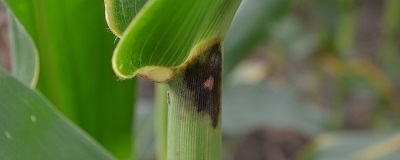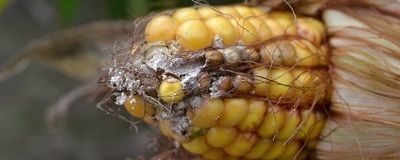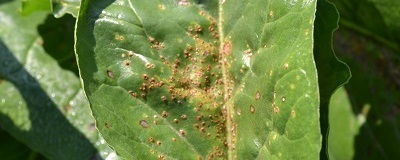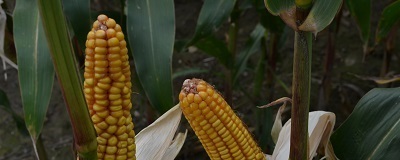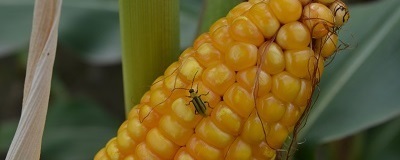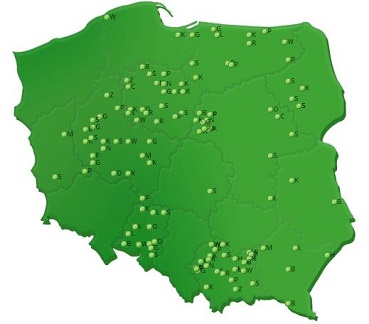Extra menu
Page menu
Social networks icons
Page content
Hops - frequently asked questions
How to reduce damage to hops plantations inflicted by hail?
Firstly, any damaged plants need to be protected against downy mildew. It is best to use a systemic agent, such as the kind that contains aluminum fosetyl as an active ingredient. The spraying should be performed as soon as possible after the downy mildew fungus invades the plant through damaged tissues.
The next step is to use a preparation that stimulates plant growth and the restoration of damaged stalks, branches, and leaves. A number of biostimulants are available that vary by mechanism of action and are proven to be effective on many crop species.
Some hop plants in my farm have started to wither shortly before they were ripe for harvest. What could be causing this?
Your plants may well have been attacked by the European corn borer. Carefully inspect stalks, especially where they touch one another. Holes in the stalks of about 2 mm in diameter with fine dust spilling out of them are a clear sign of European corn borer larvae having been feeding on your plants. A single stalk may contain multiple larvae. The larvae forage within the stalk, damaging the conductive bundles, which in turn reduces or even completely stops water transport in the plant. This precisely is what makes the plants wilt and wither. European corn borer larvae overwinter in the stalks that are left over from harvesting. Therefore, an effective method of reducing their numbers in the following growing season is to remove and destroy any remaining hop stalks on a farm.
Another cause of hop plant withering before cone harvest may be an infestation by fungi of the Verticillium genus (Verticillium wilt). One of the symptoms of the disease is leaf yellowing that starts in the lower parts of the plant and gradually spreads up to higher leaves. The yellowing may be limited to the leaf blade (sectoral chlorosis). The infected stems and branches wilt and wither. The most distinctive symptom of hop verticillium wilt is the browning of the vascular system that can be seen by cutting through the stem. Verticillium wilt usually occurs in locations in which the biological balance has been disturbed. The recommendation for controlling the disease on hops is to grow rye for green fertilizer in inter-rows between hops or to apply another organic fertilizer.
In the spring, during the side stalk formation phase, individual hop stalks, and even entire plants, suddenly wilt and wither. How can one stop this process?
Sudden hop plant wilting may be caused by damage to the lower part of stalks during cultivation or by wild animals such as deer. In either case, mechanical damage to stalks, such as abrasions or tearing, will be visible.
Unfortunately, the issue may also be caused be an infection by fungi of the Fusarium genus. In such a case, no mechanical damage to the stalk can be seen, and the withered stalk can easily be pulled out of the ground. Removed stalks may either be flat at the end or taper downwards.
Plants showing fusariosis symptoms should be removed from farms to reduce infection outbreaks. However, one should bear in mind that fusarium wilt in hops is more likely to occur where the biological balance in the soil has been disturbed. Therefore, long-term plant health improvements can be achieved by restoring this balance. The most common cause of balance disturbance is improper soil pH, unbalanced mineral fertilization and unfavorable air-water relations in the soil.
To check the spread of the disease, soil pH should be kept within the range of 6.3 to 6.5. Limit the use of nitrogen fertilizers in the form of nitrate and avoid applying the fertilizer directly under your hop plants. Use nitrogen fertilization in doses divided 3 ways during the growing season. You can achieve soil improvements both in terms of physical properties and biological activity, by systematically applying manure or green fertilizer.
When to start protecting hops against the downy mildew?
When young stalks first appear, look out for those that are spiky (which are characteristically distorted and of the light green color, with shortened internodes and curled leaves). Observe 100 plants at 3-5 sites on your farm. If spiky stalks appear on more than 10 plants (more than 10% of plants showing disease symptoms), apply a fungicide approved for hop protection against downy mildew. Where the disease is less severe, do not begin to protect hops against downy mildew until the stalks have been directed to guides. Protective treatment performed immediately after the stalks have been directed onto guides is a preventive measure taken regardless of whether any disease symptoms have been spotted.
Why are the side stalks of hops shortening?
Side stalk shortening is a characteristic symptom of downy mildew in hops. Such stalks are caused by a systemic infestation of the plant or a secondary infection of developing side buds. It is vital to properly protect hops against downy mildew at the stage of side shoot formation (BBCH 21-29).
What causes cone tip browning in hops?
Cone tips brown due to leaflet necrosis at the top of cones. The disease is an infection caused by fungi of the Fusarium genus. The infection takes place during reproductive development, i.e. flowering and setting of cones. It is exacerbated by high air humidity.
Project implemented as part of tasks 1.5
Multiannual Program of the IPP-NRI for 2016-2020
Plant Protection Institute – National Research Institute
Ulica: Władysława Węgorka 20
60-318 Poznań
tel. +48 61 864 90 75
fax +48 61 864 91 20
